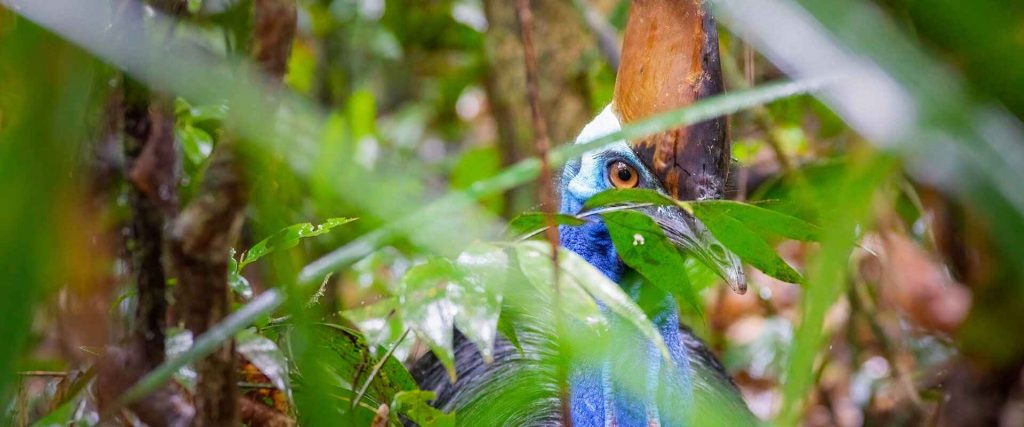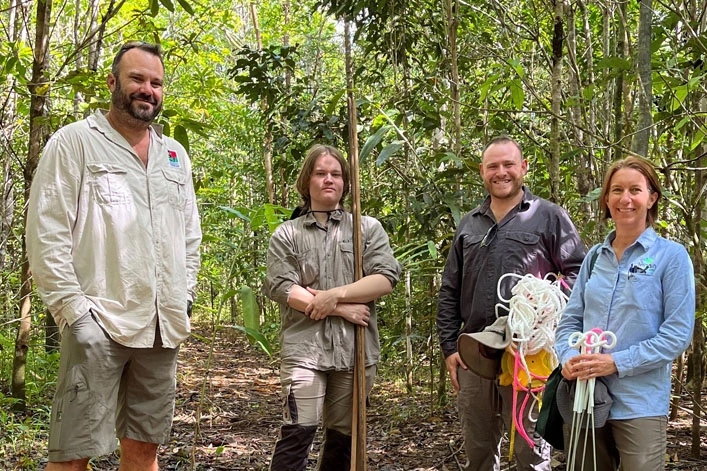In The Express: Next Step to Cassowary Credits

Southern Cassowary. Image credit: Martin Stringer
Next Step to Cassowary Credits
In a significant milestone for biodiversity conservation, the Cassowary Credits Scheme, one of the world’s pioneering biodiversity credit programs, has entered a new phase of development.
‘Next Step to Cassowary Credits’ was taken from an article in the online edition of The Express — a locally owned and independent newspaper covering Mareeba, Atherton, Kuranda, the Tablelands & the Far North. Published 19 October 2023. Rainforest Rescue is providing field testing locations to Terrain NRM as part of the Cassowary Credits program development.
 The initiative, created in the Wet Tropics region, is currently undergoing field testing at more than 30 revegetation sites across the area.
The initiative, created in the Wet Tropics region, is currently undergoing field testing at more than 30 revegetation sites across the area.
Designed by Terrain NRM, the scheme will enable Far North Queensland land managers to generate tradable units of habitat restoration, known as “Cassowary Credits”, which will be sold on environmental markets to investors ranging from philanthropists to governments and corporates.
Terrain NRM member Bronwyn Robertson said Cassowary Credits focused on restoration of Far North Queensland tropical rainforest habitat. She said up to 50,000 hectares of land had the potential to be part of the scheme.
“This is land that’s considered unsuitable for agriculture based on soil type, slope or closeness to watercourses,’’ she said.
Terrain NRM has been working with private industry, government, scientists, indigenous groups and wildlife experts to design and develop the new ecosystem services market scheme.
Ms Robertson said the new funding would also be used to build regional capacity for larger scale restoration projects and to incorporate Accounting for Nature methodology into the scheme to widen its scope to include carbon projects with environmental co-benefits.
“Our hard work is already paying off with the Cassowary Credit Scheme recently being discussed informally at the United Nations Biodiversity Conference, COP15, in Montreal, and during the Financing for Nature initiative launched by the World Economic Forum,” she said,
“Through this work, Terrain and the Queensland Government are helping to lead the way in Australia’s emerging biodiversity credit markets.
“Biodiversity credit markets are in their early stages. There is huge potential – for landholders, for companies and other businesses to drive nature repair, and for greater investment in habitat restoration across the Wet Tropics region.”
The Cassowary Credit Scheme’s development was originally funded by the Queensland Government’s Land Restoration Fund.
[‘Next Step to Cassowary Credits’. Published in The Express, 19 October 2023]
Image above taken from Terrain NRM website—Rainforest Rescue’s Justin McMahon and JCU’s Max Twist with Terrain NRM’s Tom Crow and Bronwyn Robertson getting ready to release the cassowary credits initiative.
Want more good Rainforest news in your life?
Subscribe to our eNews | Follow us on Instagram | Like us on Facebook | Subscribe to our YouTube channel
Help Protect Rainforests Forever
Donate to Protect Rainforests Forever | Become a Rainforest Guardian for as little as $2 a month | Partnership Options


